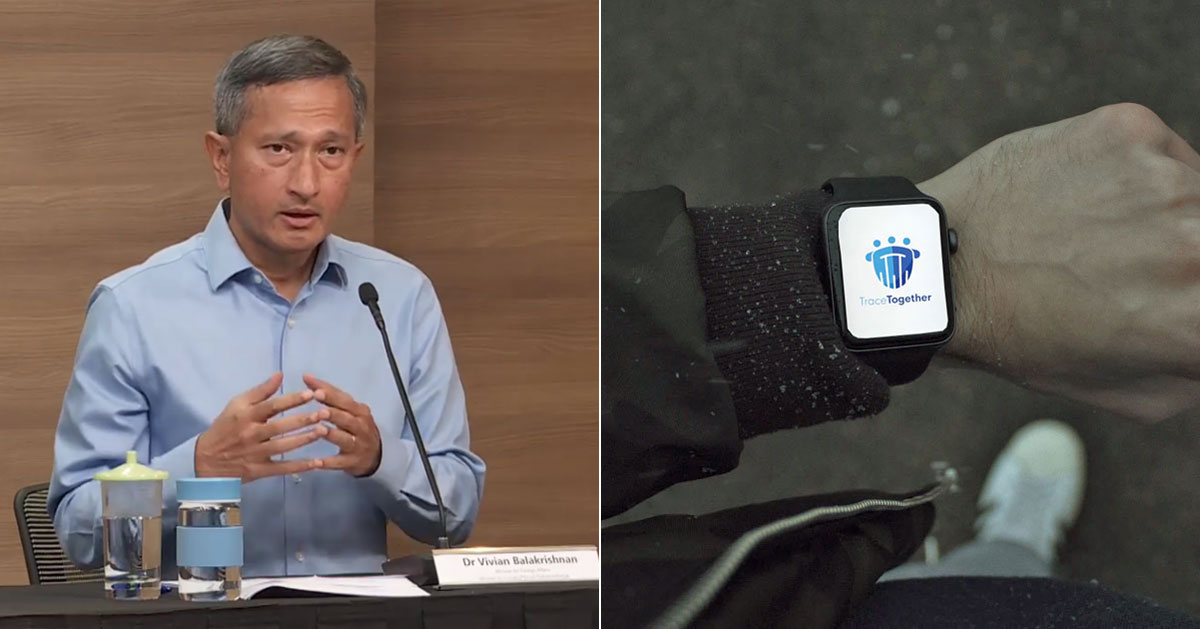Follow us on Telegram for the latest updates: https://t.me/mothershipsg
The first batch of portable and wearable contact tracing devices, or the TraceTogether tokens, will be delivered in the second half of June.
This was announced by Minister-in-charge of the Smart Nation Initiative, Vivian Balakrishnan, on June 8.
He said the devices will operate and function “exactly the same way” that the TraceTogether mobile app does on a smartphone.
Vivian said previously in Parliament on June 5 that the government is developing a portable and wearable contact tracing device, which will achieve the same objective as TraceTogether, but without the need for a smartphone.
Wearable device doesn't allow tracking
At a press conference with reporters on Monday, he reiterated repeatedly that fears of privacy intrusion are overwrought: “So here's where I need to emphasise, and repeatedly emphasise, it is not a tracking device. It is not an electronic tag, as some internet commentaries have fretted about. In particular, and here to be technical, there is no GPS chip on the device. There isn't even any internet or mobile telephone connectivity."
The device cannot track an individual’s location and movements without a GPS chip, he said.
Without internet connectivity, there is also “no possibility” of data being uploaded “without the participation and consent of the user”.
The device only captures Bluetooth proximity data like the TraceTogether app, Vivian said.
He said: “And that data never leaves the device or the phone. It is encrypted. It is stored for up to 25 days and automatically deleted.”
When will data in device be accessed
Only if an individual is diagnosed with Covid-19, will the data be accessed by the Ministry of Health (MOH).
Even then, “only a very limited restricted team of contact tracers” will have access to the data to reconstruct an activity map to identify the full range of interactions that the patient might have had, he added.
“It's worth emphasising that there isn't one big, giant centralised database. In fact, the data is decentralised and encrypted on phones and on devices, and only uploaded, if it is positive,” Vivian also said.
“Again I want to emphasise, there is no electronic tagging. There is no geolocation tracking. This is only purely focused on Bluetooth proximity data, and only used for contact tracing.”
Official Secrets Act involved
Vivian also assured the public that the data that is uploaded is protected by public sector data security recommendations, and the review committee will oversee this.
Audits will take place to make sure no data leakage occurs.
Officers involved are also covered by the Official Secrets Act.
The balance, Vivian said, is between upholding public health and maintaining personal privacy.
“Remember, ultimately, the real test of the pudding is whether we can shorten the time from identification of a patient or close contact to isolation, bring down the effective reproduction number of this epidemic, and also reassure people that we are getting the balance right between protecting public health, and protecting personal privacy," he said.
“I believe it is possible to protect both, and we're going to do so in a manner which is open and transparent.”
Top photo composite image via TraceTogether & Unsplash
If you like what you read, follow us on Facebook, Instagram, Twitter and Telegram to get the latest updates.
